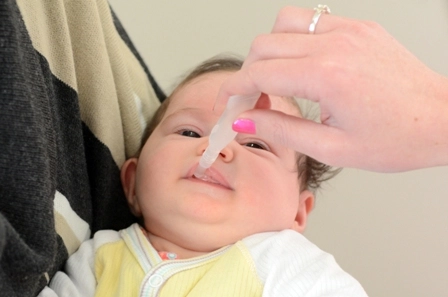Look For Payer Response For Your Vaccine Queries
Hint: Patient age plays important in vaccine coverage
As immunizations are an integral part of your internal medicine specialist’s practice, you should know how coding changes from one payer to the other.
Here are some common questions along with answers directly from payers, so you can get a firm grasp of how to report these common services.
Vaccines May Comprise Multiple Codes
Question 1: Do flu vaccines always require two codes?
Answer: Yes, according to Humana. “In order to help ensure correct billing and payment, two codes are needed for each vaccination claim: one administrative code and one vaccine code,” the payer says. You’ll report a flu vaccine administration code (such as 90460-90474) and another code for the vaccine itself, such as 90630 (Influenza virus vaccine, quadrivalent [IIV4], split virus, preservative free, for intradermal use), 90653 (Influenza vaccine, inactivated [IIV], subunit, adjuvanted, for intramuscular use), or another appropriate code that describes the material injected.
Therefore, if you administer a flu shot that includes preservatives to a nine-year-old child and the internal medicine physician performs counseling, you’ll likely report 90460 (Immunization administration through 18 years of age via any route of administration, with counseling by physician or other qualified health care professional; first or only component of each vaccine or toxoid administered) and 90658 (Influenza virus vaccine, trivalent [IIV3], split virus when administered to individuals 3 years of age and older, for intramuscular use). Use Z23 (Encounter for immunization) as the diagnosis code.
Coding Tip: Although the example refers to a flu shot, this rule is generally true of all vaccines—you should bill an administration code as appropriate and a code for the actual vaccine.
“Note that, for Medicare, the codes may not be CPT® codes,” points out a coding consultant. “For instance, administration of Afluria to a Medicare patient will likely require you to report G0008 (Administration of influenza virus vaccine) and Q2035 (Influenza virus vaccine, split virus, when administered to individuals 3 years of age and older, for intramuscular use [AFLURIA]),” he adds.
Check Age for HPV Vaccines
Question 2: Our internist administered a Gardasil vaccination to an eight year old patient, and the claim was denied based on an age edit. Can you advise?
Answer: Most payers will only reimburse HPV vaccinations for patients ages nine through 26. The Aetna policy, for instance, states, “Aetna considers Gardasil, Gardasil 9, and Cervarix a medically necessary preventive service for girls and women age 9 to 26 years. Aetna considers Gardasil and Gardasil 9 a medically necessary preventive service for boys and men age 9 to 26 years.”
Therefore, if your patient is age nine or older, most insurers will reimburse you for the vaccination. Keep in mind, however, that you can’t typically collect for a Gardasil 9 vaccination if the patient has already completed a three-dose series with Gardasil or Cervarix.
For your HPV vaccine patients, you’ll report the appropriate administration code such as 90471 (Immunization administration [includes percutaneous, intradermal, subcutaneous, or intramuscular injections]; 1 vaccine [single or combination vaccine/toxoid]) or the 90460 for counseling administration codes, along with the vaccine code, such as 90649 (Human Papillomavirus vaccine, types 6, 11, 16, 18,quadrivalent [4vHPV], 3 dose schedule, for intramuscular use). You’ll use Z23 as the ICD-10 code.
Get ABN for Travel Vaccines
Question 3: Can we collect for a preventive immunization that we administer to a patient traveling to Africa?
Answer: Payment will depend on coverage for vaccines that are required to go to Africa or for any other countries. For example, Cigna says, “Immunizations that are administered solely for the purpose of travel or occupation are typically excluded from coverage in most Cigna plans.”
In these cases, therefore, you should have the patient sign an advance beneficiary notice (ABN) before the service in case the insurer does not reimburse you for the service.
Don’t Undercut Medicaid
Question 4: We bill $23.25 to Medicaid for a “Vaccines for Children (VFC)” immunization administration service, but we only bill uninsured patients $20 for VFC immunizations. Our office manager disagrees with this practice—is she right?
Answer: Depending on your state laws, yes, she may be correct. According to an information sheet from the Maryland Department of Health and Mental Hygiene, “You cannot charge a patient less than you bill Medicaid/MCO for the same service. However, if the uninsured patient does not have the ability to pay the VFC administration fee, the vaccine must be provided and the administration fee must be waived.”
Therefore, you have to bill the uninsured parent the same $23.25 (or more) that you charged to Medicaid, but if the parents cannot afford that, you can waive the charge, according to Maryland state law. This could vary based on your state rules, so check the regulations in your region before billing.
Look to Modifier for VFC Program
Question 5: We had a VFC claim denied because of a missing modifier. Which modifier is required for VFC immunizations?
Answer: This also varies based on your state, and can even differ by insurer if your patients live in different areas. According to the United Healthcare Vaccines for Children policy, UHC requires one of three modifiers, depending on your state. In Arizona, New York, Washington, and Nebraska, you must append the SL modifier (State supplied vaccine) to the vaccine administration code and the serum code if you want to collect payment.
However, UHC says, Maryland requires the SE modifier (State and/or federally funded programs/services) to be appended to the vaccine serum code, whereas in Mississippi, you must append the EP modifier (Service provided as part of Medicaid early periodic screening diagnosis and treatment [EPSDT] program) to the vaccine administration code and the serum code.




